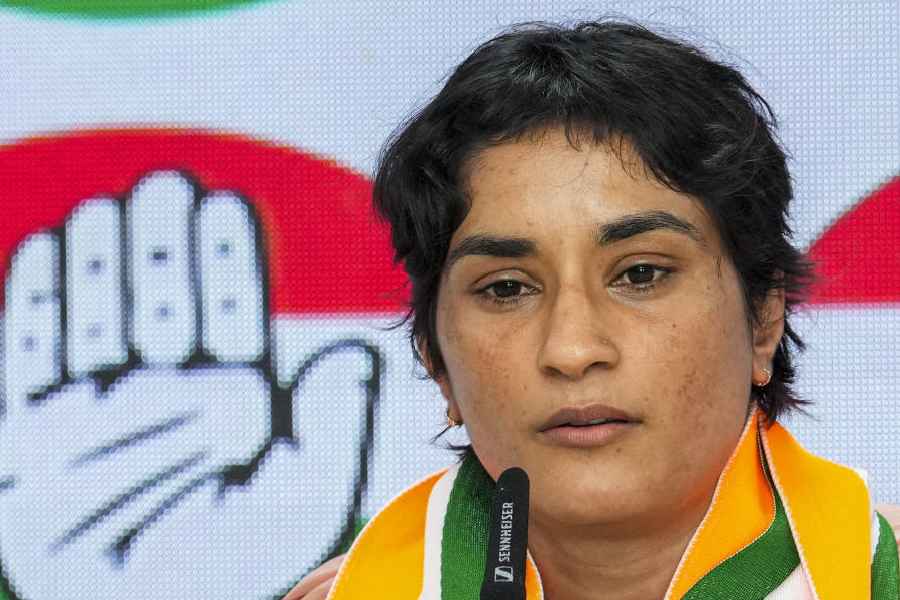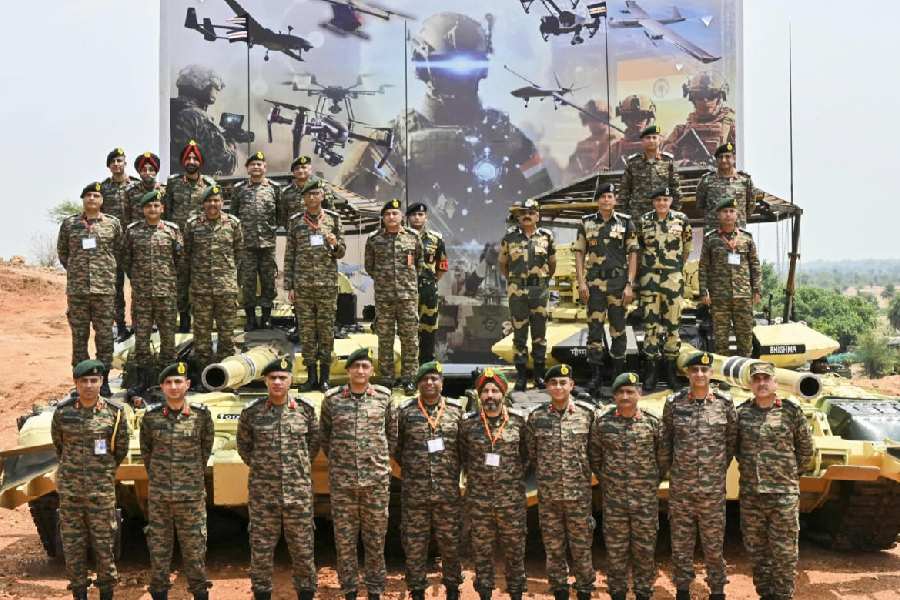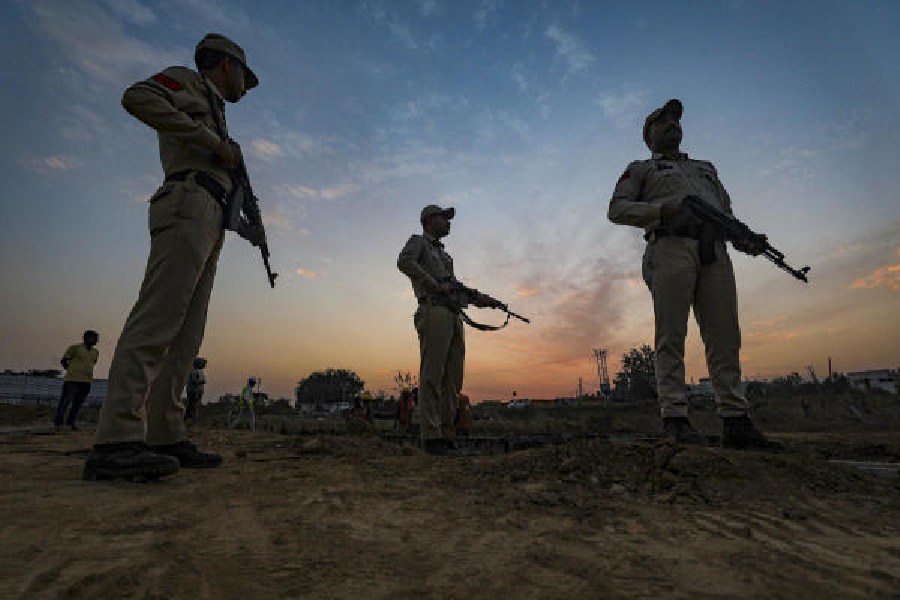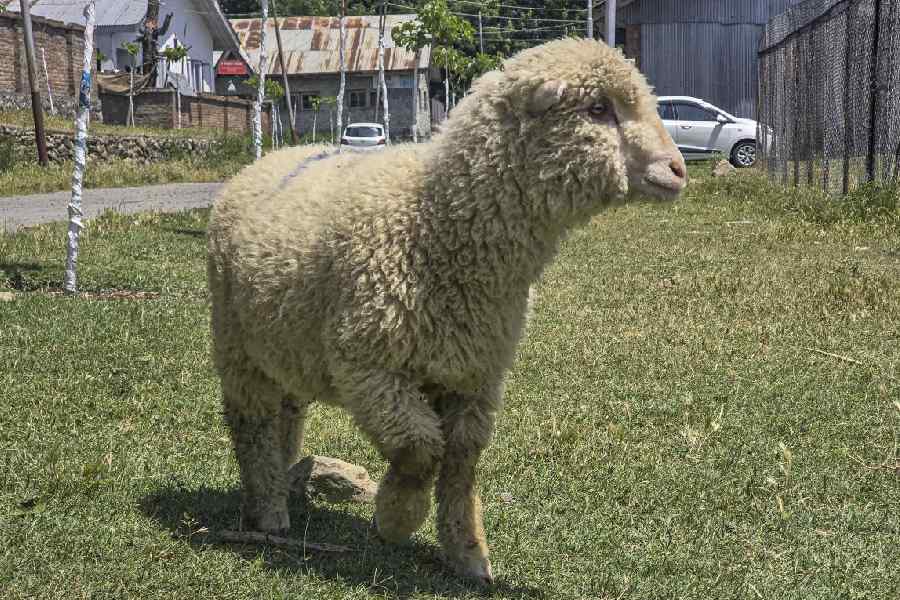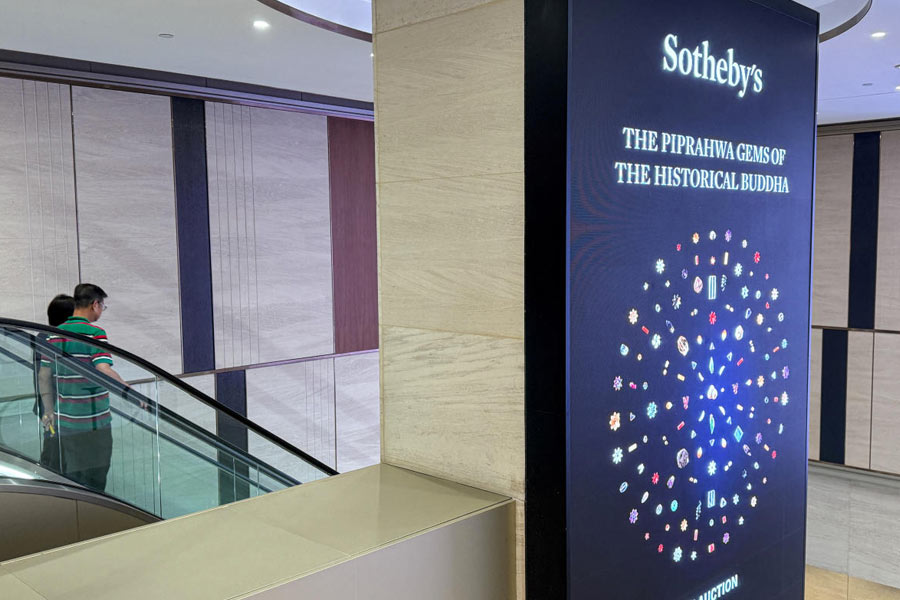Prime Minister Narendra Modi today called for a quadri-colour revolution to usher in changes in the country's agriculture sector, drawing inspiration from the Tricolour.
Modi, attending the 87th foundation day function of Indian Council of Agricultural Research (ICAR) at SK Memorial Hall in the morning, spoke of the main colours - saffron, while and green - and also of blue, the colour of the wheel depicted in the centre of the National Flag.
Coming from a party, which in political circles is commonly referred to as the saffron party, Modi started defining his concept with saffron - the colour on top of the flag. Although he immediately said "different people would interpret it differently but for me it represents the colour of energy", chief minister Nitish Kumar, who was on the dais, had a meaningful smile on his face.
His smile soon gave way to a serious look when Modi used the function to highlight Bihar's failure to generate sufficient power. "Bihar produces about 250-300MW on its own... Recently, I had been to Bhutan when ambitious hydel power projects were finalised. Bihar would get about three times of the power it produces now from these projects," Modi said.
He spoke on improving milk production and a second green revolution while explaining his concept of the quadri-colour revolution. The official function again took a political colour when Modi started explaining the fourth revolution - the blue revolution - ushering in improvement in aquaculture in general and fish production in particular. "Bihar has large number of water bodies but the state still spends Rs 400 crore for purchasing fish from Andhra Pradesh," Modi said. All this while, Nitish sat with his right hand firmly clasped in his left.
Earlier speaking at ICAR's foundation day function - today was the first time that the ceremony was held outside Delhi since its establishment in 1929 - Modi reminded the people that when the first agriculture research institute was opened in the colonial period, Bihar was selected for it. "I presume that the fertility of Bihar's land and its people's ingenuity would have been the factors which would have led to this decision," he said.
The agriculture research facility Modi spoke of was started at Pusa, around 100km northeast of Patna, in Samastipur district in 1905 and after the 1934 earthquake, it was shifted to Delhi.
Modi used the ICAR function to launch some agriculture programmes, including Farmer First and Arya.
Earlier, Union agriculture minister Radha Mohan Singh announced the Rajendra Agriculture University in Pusa would be made a central university and the cabinet has approved a proposal.
"I hope that two years down the line, the foundation day function of ICAR would be held in Pusa," he added.


